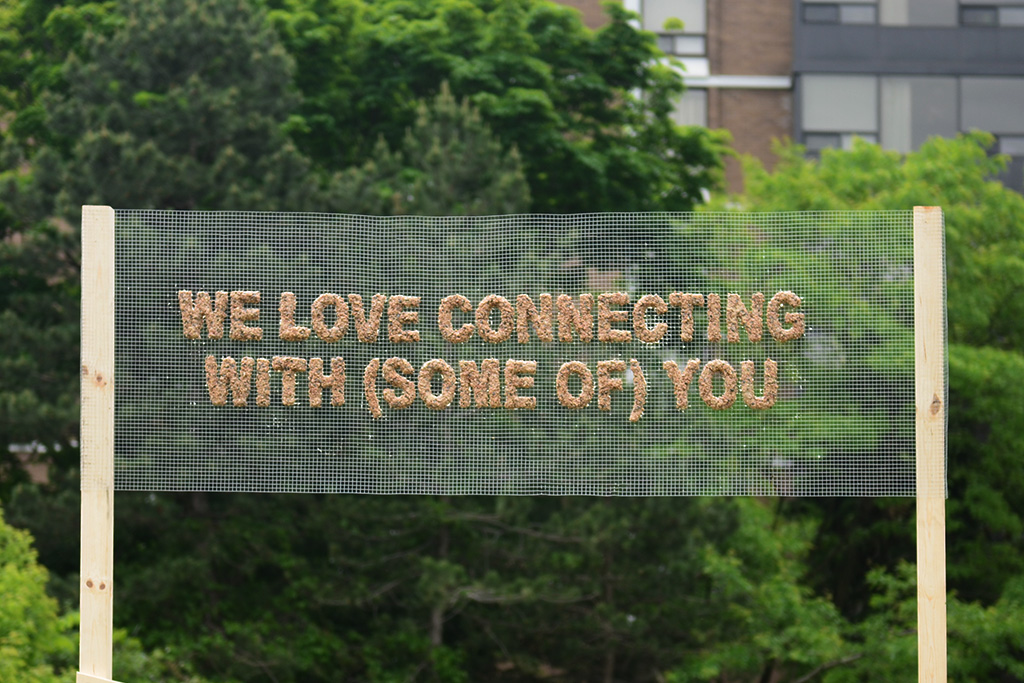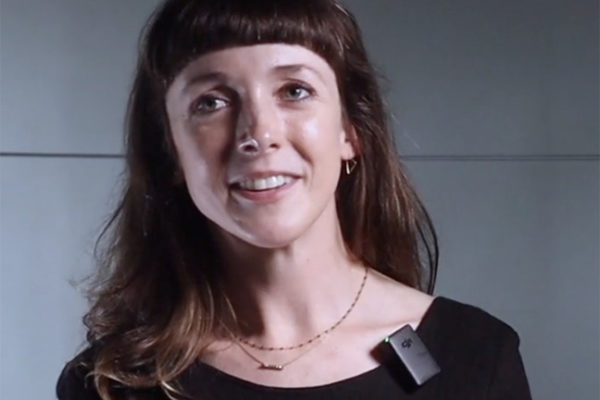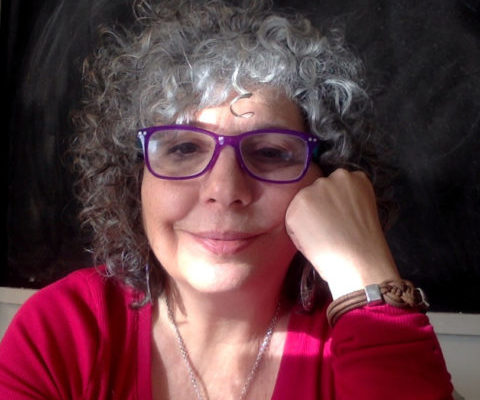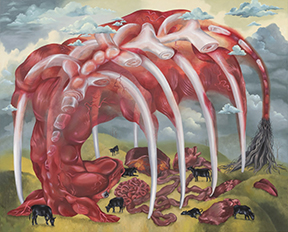Lisa Hirmer is an interdisciplinary artist based in Guelph, Ontario, whose practice spans visual media, social practice, performance, art-based research and occasionally writing. She is primarily concerned with collective relationships, in communities and public spaces as well as within more-than-human ecologies. In her public practice, she explores the complicated public life of ideas. In her photo- and text-based works, she studies the forces that shape and transform human relationships with surrounding ecologies.
Hirmer recently participated in Saunter Trek Escort Parade, in partnership with Queens Museum and led a walk at the Queens Botanical Garden called “Forests Not Yet Here: An Exercise in Arboreal Time.” Sangamithra Iyer had a chance to chat with Lisa Hirmer about her work.
How did you come to conceive “Forests Not Yet Here: An Exercise in Arboreal Time” ?
I was invited by the curators of Saunter, Trek, Escapade, Parade to come to Queens and lead a walk in connection with the show. My work in the show is a series of sharable “scores” which are short, poetic texts with simple prompts that viewer-participants take out of the gallery and enact on their own time. These scores explore material exchanges between human and tree bodies, moments where matter moves from one species to another. The idea for the walk was to do an extended version of these scores, and use the space of the Queens Botanical Garden to trace different exchanges taking place. I wanted to highlight the ways that the boundaries of a human body, where we end and the world begins, are often less solid than we imagine them to be and in particular the ways that humans and trees have shaped each other across the supposed boundaries of their being. Some of this happens at the scale of everyday lived time, the exchange of carbon between trees and humans, for example. But there are other examples that play out across very different time scales. The way atmospheric records build in tree rings across hundreds of years, for example, or the way that our bodies evolved over billions of years in an oxygen-rich world created by photosynthesizing beings.
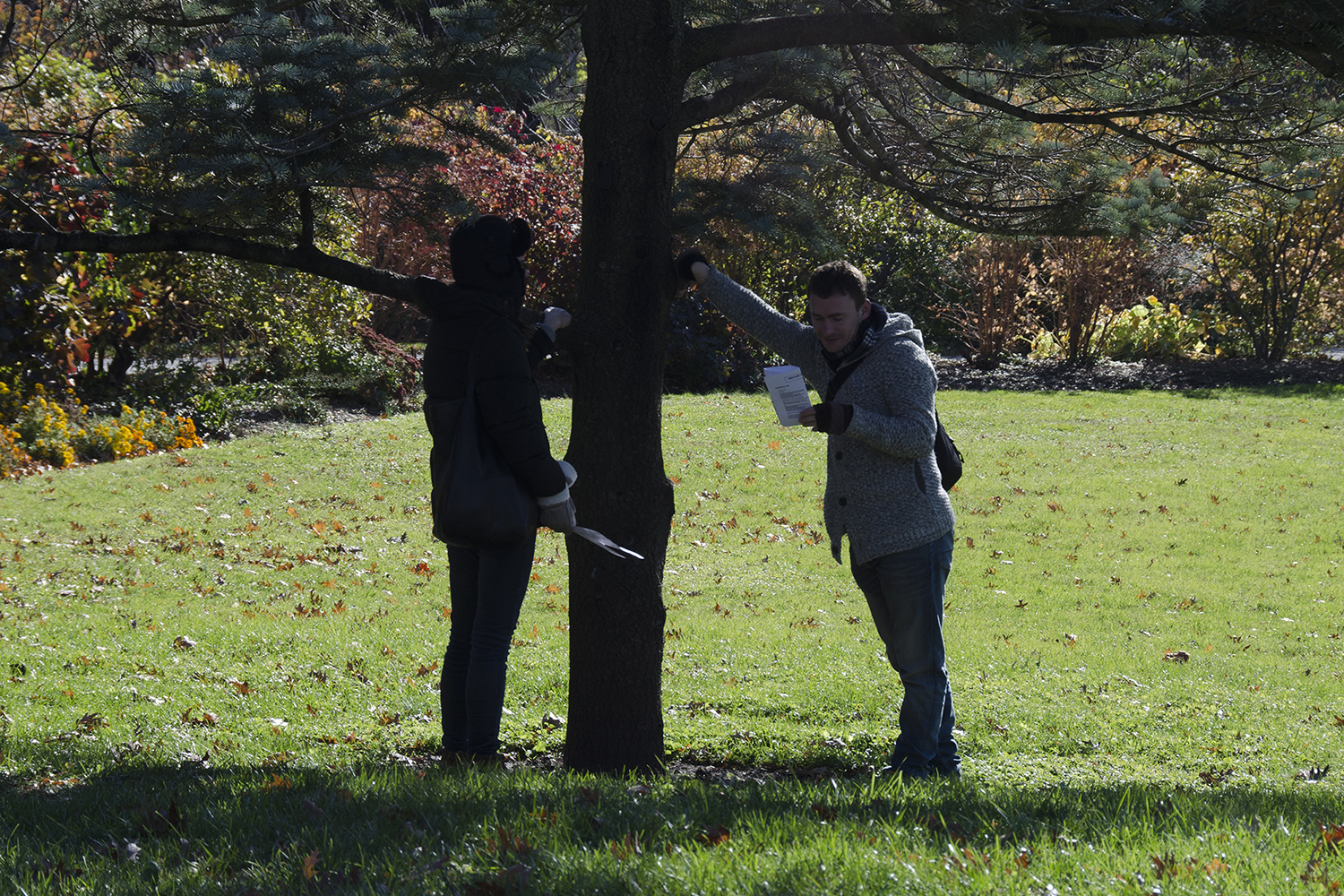
Your recent walk at the Queens Botanical Garden was also a passage in time back to the animals of the ice age. Can you tell us more about that?
Yes! One of the stops on our walk was at the Osage Orange tree in the garden. For those who don’t know this tree it produces softball sized yellow-green fruits. It is the only surviving member of its genus in North America as its close relatives went extinct after the last ice age. I’m really interested in the way living species can carry memories of species that are no longer here. I see them as traces of the ways beings entangle with each other. In the case of the Osage Orange the scale of the fruit gives us a clue. If we think of the size of fruits and nuts of trees species abundant now, they are much smaller. They are scaled to the size of extant animal bodies. This is because fruit and nut trees need animals to move their seeds around. They create abundant, enticing gifts to recruit the assistance of animals whose mobile bodies carry the seeds well beyond the reach of a tree. The Osage Orange is scaled to the mega fauna that was here during the last ice age, think mammoths or giant bears. There is nothing living now that can really eat the Osage Orange. Though squirrels might give them a nibble, they are not able to carry them around. Species like this are called evolutionary anachronisms. Beings that are out of place in time. The Osage Orange probably survived into the present because humans propagated it, possibly because it creates strong, useful wood. Without human bodies performing the task of the ice age megafauna, the Osage Orange would not be here now. This is one way human and tree bodies influence each other. But here I’m also thinking about confluences of scale, of the ways bodies have exerted pressure on each other over time, becoming bigger or smaller in response to the things around them.
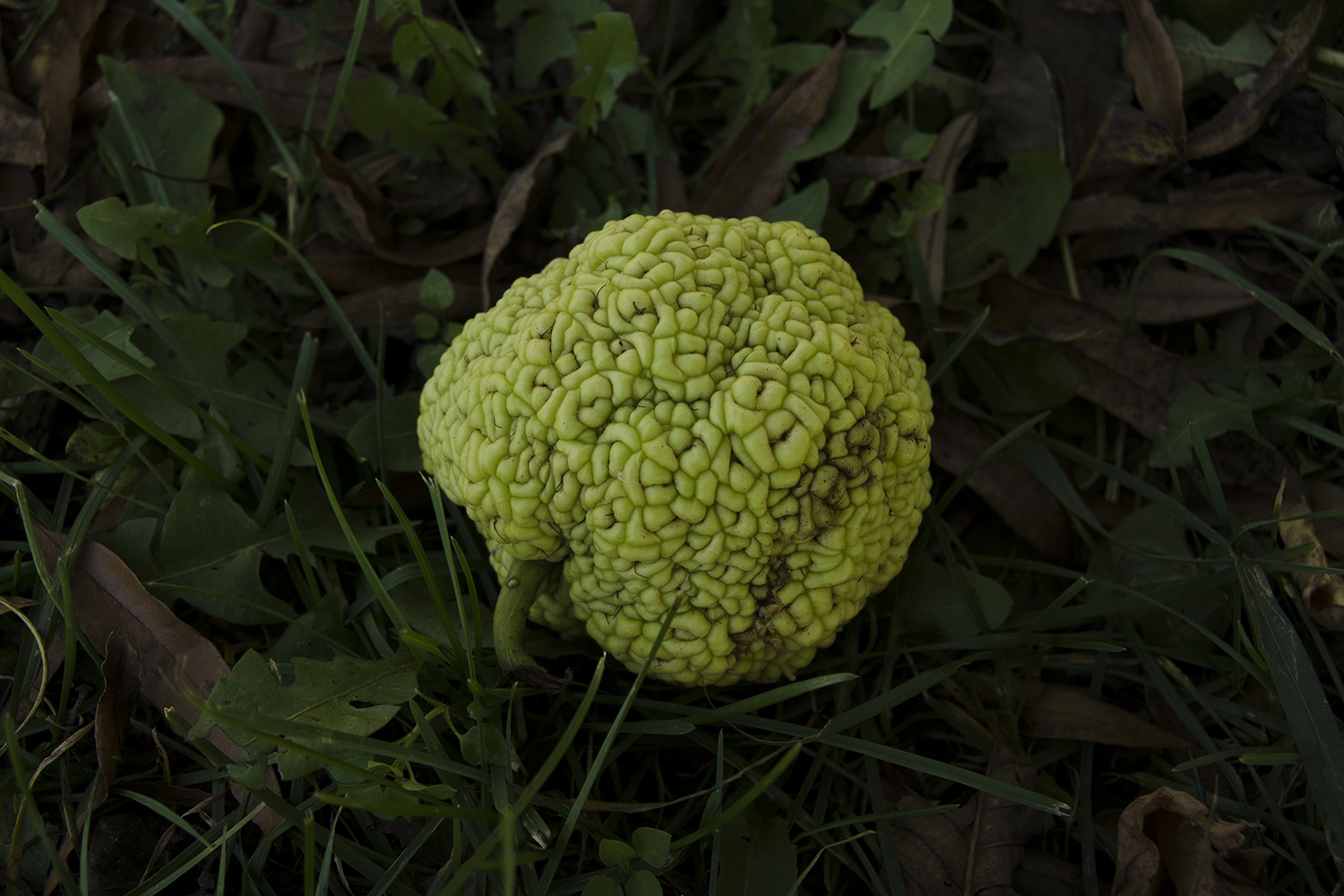
Your work examines the interrelationships we have with trees and their relationships with other animals. In terms of time and timelines, how is climate change altering and disrupting these relationships?
Another type of anachronism we looked at during the walk were misalignments of seasonal patterns. Over time, evolution has produced a rich web of synchronized events that align seasonal changes, growth cycles and migrations. Berries turning ripe just as exhausted migratory birds touch down, for example. The tree we stopped at in the garden for this conversation was a Serviceberry. Serviceberries are one of the first things to produce flowers and berries as winter thaws and are an important early spring food for pollinators and birds. Another name for Serviceberry is Shadbush, named because it would bloom as the shad (a kind of fish) runs started in the streams. So though the tree and the fish are not directly connected, their timings were aligned so predictably that they became associated with each other. One of the many devastations of climate change is the way it interrupts these alignments. As I understand it, different species are attuned to different indicators, so one might be reacting to increasing daylight, while another might be responding to temperature. When patterns unfold the way they have for thousands of years, these synchronicities line up as expected; but as climate change rapidly disrupts these patterns, things can stop lining up—maybe travel-depleted birds land to find the berries they need aren’t yet ripe or maybe have already come and gone. One of the aims of the walk, as with much of my work, is to take the time to attune ourselves to these disruptions, not just as an idea in our minds but to take the time to feel it in our bodies. I want to challenge participants (and readers) to start (or continue) to notice these misalignments happening around us, to really register them as disruptions.
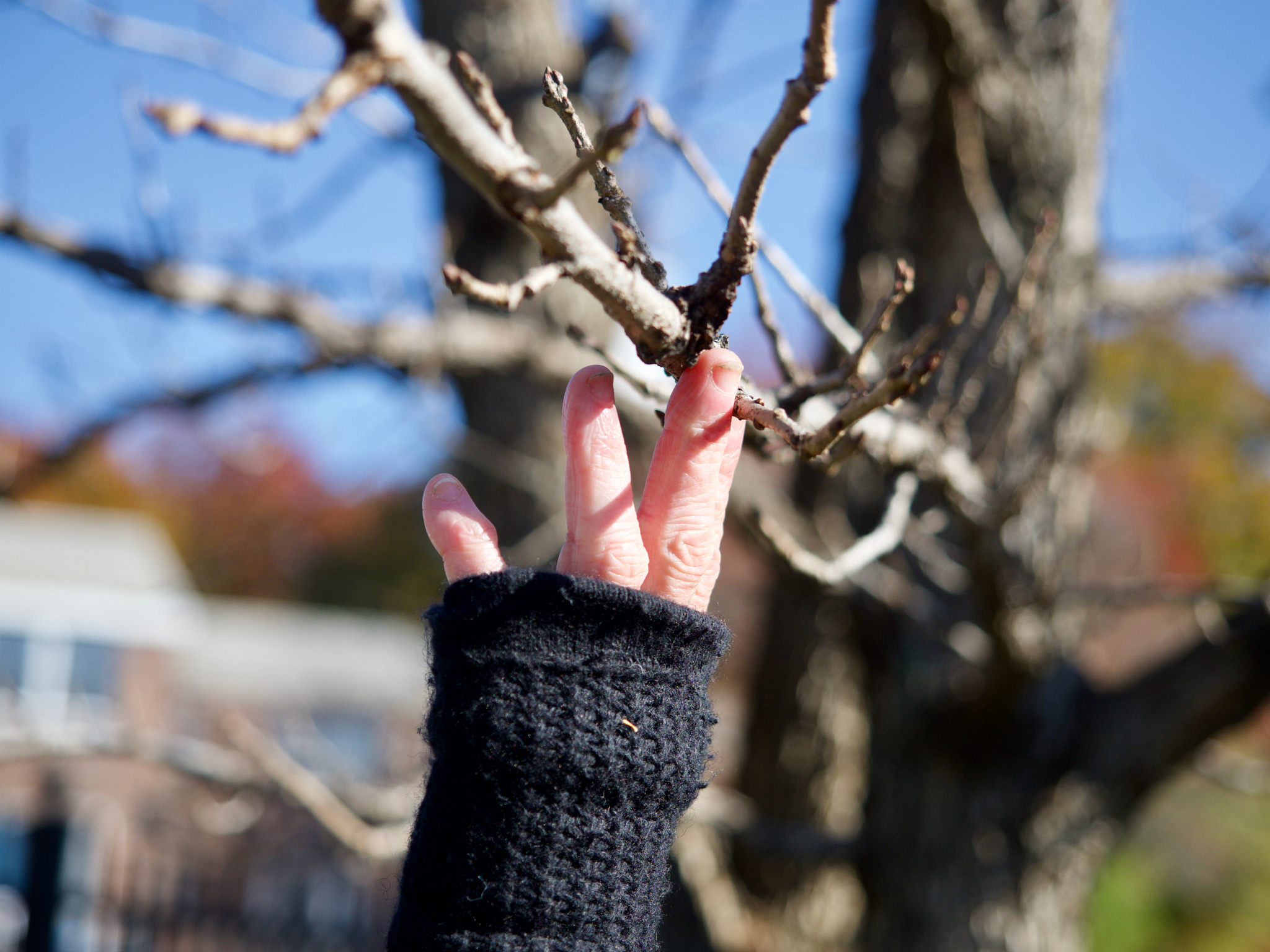
I wanted to also ask you about your other projects that consider our relationships with the more than human world, specifically synanthropes. Can you tell us what drew you to this work and the role you see of social practice in engaging with these issues?
Throughout my work I’m interested in collective relationships, the way we are together both as groups of humans and as humans living in exchange with many other beings. An idea I’ve been dismantling in my work since I was grad student is the idea that nature is a place apart, that it lives elsewhere. I think this idea can become an escape that allows us to ignore the way we live within complex ecologies every day. We never stop being in ecology. One place this reveals itself is in urban relationships with synanthropes, which are species ecologically associated with humans, species that thrive in the conditions we create around us. These animals are almost always classified as pests: rats, pigeons, raccoons, squirrels and so on. We call them pests but they proliferate exactly because we create conditions that allow them to proliferate. Synanthropes are our ecological reflections. One synanthrope I talk about a lot is the Canada Goose because it wasn’t always a synanthrope. At the turn of the last century Canada Goose numbers were dwindling rapidly and it was the focus of deliberate conservation efforts. And now, not much more than a hundred years later, they are seen as pests and often the victims of municipal culling efforts. “Pesty-ness” gets projected onto the animals, like it’s their nature to be disruptive, like they are somewhere they don’t belong. But the reason we have so many Canada Geese is because the way we build most urban parks—expanses of trimmed grass, a few large trees and a water feature—creates the ideal conditions for a Canada Goose. They are so many of them because we keep replicating conditions that cause them to flourish. Culturally we say one thing (pest) but materially we are beckoning the synanthropes to come live alongside us. A gaggle of geese is a reflection of our unending obsessional with an English Landscape Garden aesthetic!
In my work, and specifically in a 2016 project called To The Synanthropes (which was commissioned by the CAFKA biennial), I aim to highlight this contradiction and reveal the material conversations we are having with other animals even when we aren’t aware of them. In To the Synanthropes, I collected hundreds of letters written to the synanthropes of the city. I distilled these into a handful of sentiments that ran throughout the letters, the way some synanthropes were considered charming and others weren’t, or the way a handful of decorative animals in a park is great but too many becomes threatening. These notes were written to the synanthropes in large installations that used the same material gestures humans are constantly creating around them: bird seed, food waste, park landscaping, and so on. Often what is said in words was in complete contraction to what the work was saying materially to the synanthropes. One example was an installation created from birdseed saying: We love connecting with (some of) you. This came out of the numerous letters about how people loved birds but hated squirrels or loved some bird species but not others, a sense that some species were deserving of human kindness and others were not. Materially putting out birdseed says the same thing to everyone: welcome! By making these exchanges big and obvious, I hope to reveal the contradictions at work. I want people to think about the ecologies we create around ourselves and to take responsibility for how they affect nonhuman urban inhabitants.
